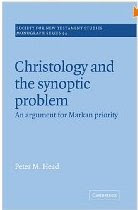(In French) This article presents a morpho-syntactic overview of the Noun and Nominal Group in Mundani, a Grassfields Bantu language of West Cameroon. It presents first a detailed description of the Mundani noun itself (the "Basic NP"), based on a corpus of about 1,500 noun roots. Nouns are divided according to the system of Proto-Bantu into 13 classes, themselves grouped into 9 genders distinguished not so much by their semantic content as by their prefixes, and by the morphological agreements that they trigger within a larger nominal group. This wider nominal group (the "Secondary NP") may combine a nominal with different independent lexical and grammatical elements in a fixed linear order. Five types of Secondary NP are identified on the basis of their syntactic functions and are described in detail.
Showing posts with label Elizabeth Magba. Show all posts
Showing posts with label Elizabeth Magba. Show all posts
"Le nom et le syntagme nominal en mundani"
(In French) This article presents a morpho-syntactic overview of the Noun and Nominal Group in Mundani, a Grassfields Bantu language of West Cameroon. It presents first a detailed description of the Mundani noun itself (the "Basic NP"), based on a corpus of about 1,500 noun roots. Nouns are divided according to the system of Proto-Bantu into 13 classes, themselves grouped into 9 genders distinguished not so much by their semantic content as by their prefixes, and by the morphological agreements that they trigger within a larger nominal group. This wider nominal group (the "Secondary NP") may combine a nominal with different independent lexical and grammatical elements in a fixed linear order. Five types of Secondary NP are identified on the basis of their syntactic functions and are described in detail.
"Mundani Pronouns"
This article is a survey of the pronominal systems of Mundani, a Grassfields Bantu language of West Cameroon. It presents the morphological shapes and semantic values of the main pronoun series. These series are then divided into three sets on the basis of their syntactic functions. There is also a detailed treatment of emphatic pronouns, and the handling of co-reference in the pronominal system, involving reciprocal and reflexive relations, logophoric pronouns, and "Switch Reference" at discourse level.
Subscribe to:
Posts (Atom)












